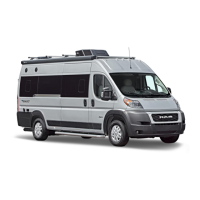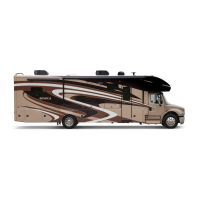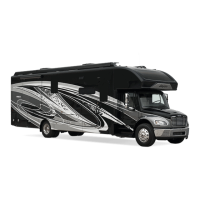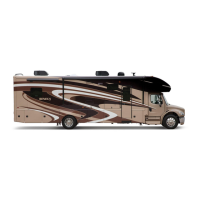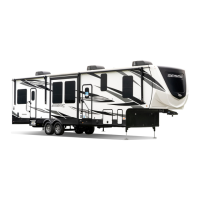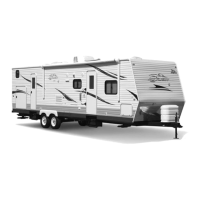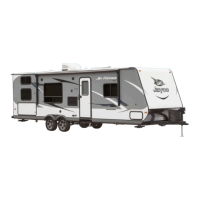70
Remove the connection cap and attach a non-toxic drinking water
hose to the threaded inlet.
1. The other end of this hose should be connected to a pres-
surized fresh water source (such as a faucet or spigot). You
should use a non-toxic drinking water hose dedicated only to
supplying fresh water to the vehicle.
2. Turn ON the water at the water source. Open the cold wa-
ter supply faucets to bleed air from the water lines. When
the water lines are nearly full, you may experience some “air
pockets.” Allow these to escape before closing the cold water
supply faucets.
3. Water heater bypass valves A and B must be open to allow water into the water heater.
Refer to the Water Heater Bypass detail in the Sanitizing/Winterizing the Plumbing
System section for an explanation on conguring the bypass valves. Bypass valves are
typically located near the water heater.
The fresh water connection should be unscrewed (i.e., the non-toxic drinking water hose dis-
connected) when the recreation vehicle is left unattended for any amount of time. If some-
thing would happen to the water system, this may help limit water damage to a smaller area.
1. Shut OFF the water at the pressurized water source.
2. Disconnect the non-toxic drinking water hose and reinstall the connection cap. The
connection cap should always be installed if the water ll is not in use.
The City Water Fill inlet when connected to a pressurized fresh
water source sends water through the water lines and xtures without the
use of the pump. The fresh water tank can be lled using the city water
connection (see Fresh Water System).
Water Purification System (if so equipped)
If the water supply has not been used for some time, allow the water to ow for
several minutes to ush the system.
When not in use, the water lter cartridge should be stored out of freezing tem-
peratures. RV antifreeze will damage the water lter cartridge.
Access to the water purier is through the (rear) opening on top
of the driver side bed base.
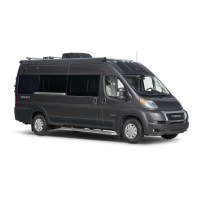
